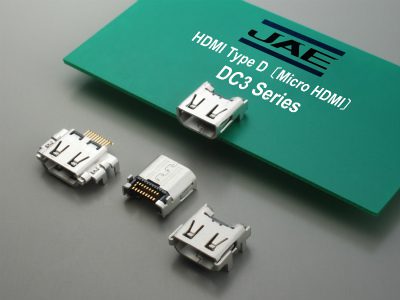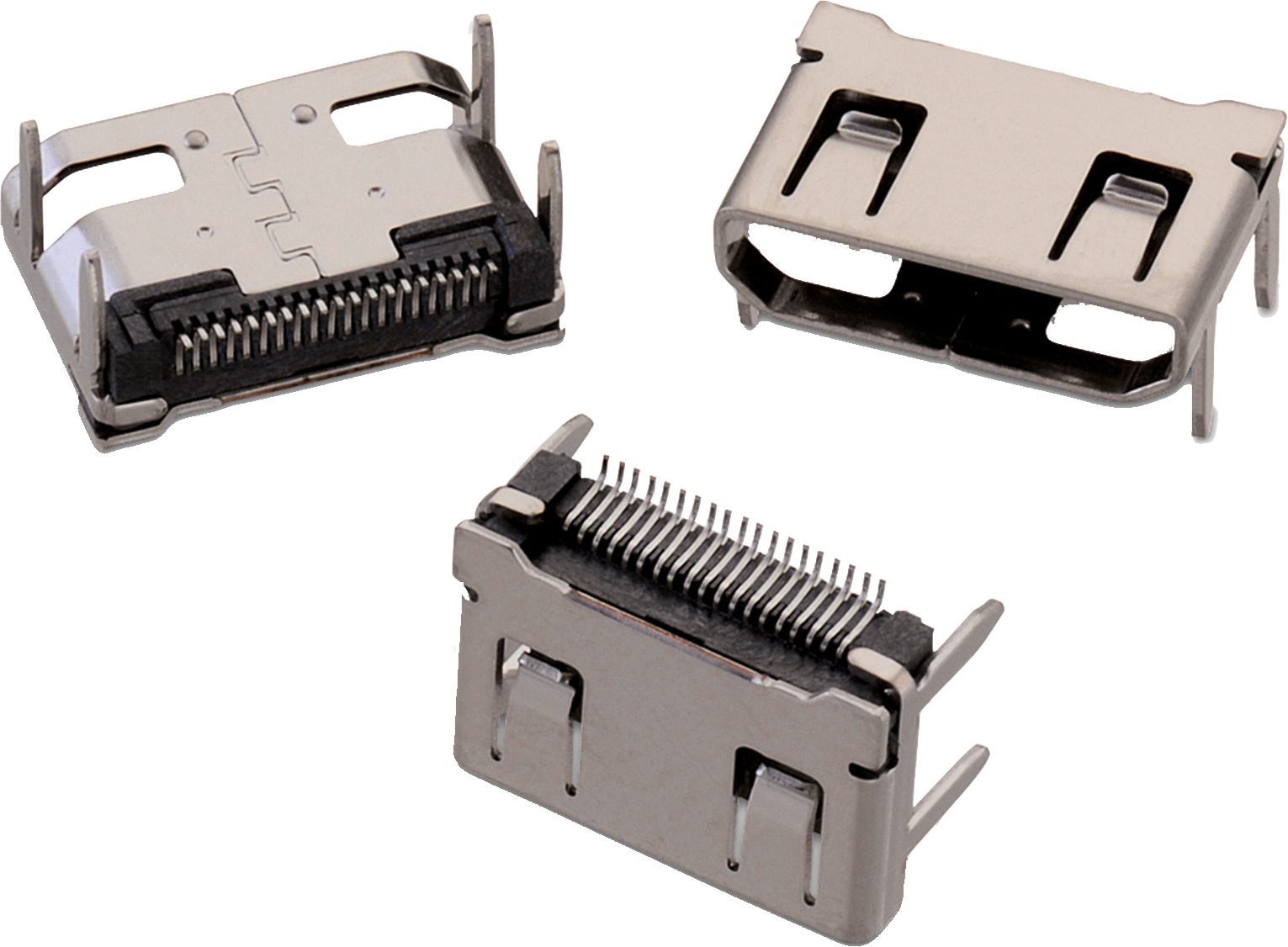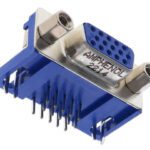What are HDMI connectors?
Meet the Connector: HDMI Connectors
An HDMI connector is a standardized interface used for transmitting high-definition audio and video signals between a source and display. For more than two decades, HDMI (high-definition multimedia interface) connectors have served as a bridge between multimedia devices such as gaming equipment, televisions, computer monitors, automotive technologies, cameras, and audiovisual receivers. HDMI connectors facilitate the transmission of high-resolution audio and video content, supporting resolutions up to 4K, high refresh rates, and multi-channel audio formats like Dolby Atmos and DTS:X.
The development of HDMI connectors began in the early 2000s when a consortium of electronic manufacturers asked for a standardized interface capable of transmitting high-definition multimedia signals. The result of their collaboration was the first version of HDMI, released in December 2002. This pioneering interface simplified the connectivity process, replacing a complex array of analog connectors such as VGA, composite, and component cables with a single, streamlined solution for multimedia connectivity.
Design Notes
HDMI connectors consist of a compact, rectangular plug with a specific number of pins, corresponding to different signal channels. The interface integrates digital data transmission, allowing for uncompressed, high-definition audio and video signals to be transmitted between compatible devices.
Standardization
The standardization of HDMI connectors and cables is overseen by the HDMI Forum, which collaborates with connector suppliers and OEMs to ensure adherence to the standard, interoperability, and the development of new products and updates to the standard.
HDMI connectors are available in various sizes, including the standard Type A connector, which is widely used in consumer electronics; the smaller Type C (mini-HDMI); and Type D (micro-HDMI) connectors, which are used in compact devices like smartphones and tablets.

HDMI Specification HDMI 2.1b supports a range of higher video resolutions and refresh rates, including 8K60 and 4K120, resolutions up to 10K, dynamic HDR formats, and bandwidth capability up to 48 Gb/s. (Image courtesy of HDMI Forum.)
HDMI Specification HDMI 2.1b supports a range of higher video resolutions and refresh rates, including 8K60 and 4K120, resolutions up to 10K, dynamic HDR formats, and bandwidth capability up to 48 Gb/s. (Image courtesy of HDMI Forum.)
Evolution and Versions:
The evolution of HDMI connectors has introduced various versions, each offering enhanced features and capabilities.
HDMI 1.0: Introduced in 2002, it supported standard-definition and high-definition video resolutions up to 1080p.
HDMI 1.4: Released in 2009, HDMI 1.4 added support for 3D video, Ethernet connectivity (HDMI Ethernet Channel), and Audio Return Channel (ARC).
HDMI 2.0: Debuted in 2013, HDMI 2.0 increased bandwidth to support higher resolutions and refresh rates, including 4K video at 60Hz.
HDMI 2.1: Launched in 2017, HDMI 2.1 introduced support for 8K resolution, higher refresh rates, dynamic HDR, enhanced gaming features (Variable Refresh Rate, Quick Frame Transport), and eARC (enhanced Audio Return Channel).
Future iterations of HDMI may focus on increasing bandwidth capabilities to support even higher resolutions, frame rates, and color depths, ensuring compatibility with cutting-edge display technologies. With the proliferation of 8K displays, virtual reality (VR), augmented reality (AR), and immersive audio formats, HDMI is likely to evolve to meet the changing demands of consumers and industries. Additionally, advancements in wireless HDMI technology may offer greater flexibility and convenience in multimedia connectivity, eliminating the need for physical cables.
Mounting type: Surface mount
Mating cycles: HDMI connectors are typically rated for a minimum of 10,000 mating cycles.
Positions: HDMI connectors typically have 19 pins, which correspond to 19 positions within the connector. These positions accommodate the various channels required for transmitting high-definition audio, video, and control signals. Additionally, HDMI connectors may have additional pins or positions for features like Ethernet connectivity (HDMI Ethernet Channel), Audio Return Channel (ARC), and other proprietary functionalities introduced in newer HDMI versions.
Dimensions: Length: 13.9 mm (0.55 inches); width: 4.45 mm (0.175 inches); height: 8.9 mm (0.35 inches)
Contacts
Pins: 19
Spacing: 1.27 millimeters (0.05 inches)
Pitch: 0.635 millimeters (0.025 inches).
Height: Typically ranges around 8.9 millimeters (0.35 inches) for Type A
Contact resistance: Typically low; in the range of milliohms (mΩ) to microohms (μΩ)
Material specifications
The HDMI connector body is typically made of thermoplastic materials such as high-temperature engineering plastics (e.g., polyamide, polycarbonate) or metal alloys (e.g., zinc, aluminum) for durability and heat resistance.
Physical properties
Insulation: Insulating materials such as polymers or ceramics are used to separate and insulate the individual contacts within the connector to prevent short circuits and ensure proper signal transmission.
Shielding: Many HDMI connectors incorporate metal foils or braided shields to protect against electromagnetic interference (EMI) and radio frequency interference (RFI).
Locking mechanism: Standard HDMI connectors, such as the Type A connector, do not feature a locking mechanism. They rely on friction and the fit between the connector and the HDMI port to remain securely connected.

JAE’s HDMI Type D Micro connector is widely used in cameras and videography equipment.
Markets and Applications
Consumer, Automotive, Medical
HDMI has become the de facto standard for multimedia connectivity. In home entertainment systems, HDMI cables connect Blu-ray players, gaming consoles, streaming devices, and set-top boxes to high-definition televisions. In computing, HDMI interfaces enable the connection of laptops, desktops, and graphics cards to external monitors or projectors. They are also used in automotive applications, medical equipment, and any infrastructural element that includes a screen or display.
Suppliers
HDMI connectors are available in many variations from many suppliers, including Amphenol Communications Solutions (FCI), Molex, Hirose, JAE, TE Connectivity, Wurth Elektronik, Cvilux, Foxconn, FCI, Lotes, GCT, JST
Related products
HDMI cables
DisplayPort
Like this article? Check out our other Meet the Connector and Connector articles, our Consumer Electronics Market Page, and our 2023 and 2024 Article Archives.
Subscribe to our weekly e-newsletters, follow us on LinkedIn, Twitter, and Facebook, and check out our eBook archives for more applicable, expert-informed connectivity content.
- Where in the World is Amphenol LTW’s Luc Kan? - April 23, 2024
- TE Connectivity’s Sustainability Efforts Pay Off - April 23, 2024
- What is a VGA Connector? - April 23, 2024







